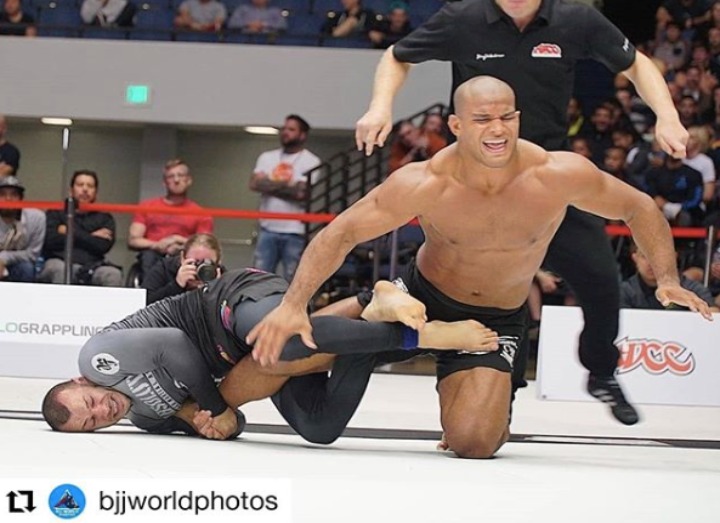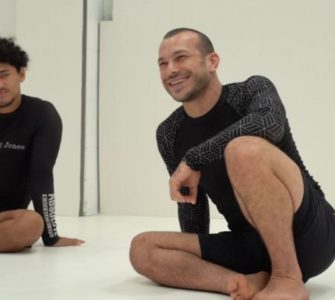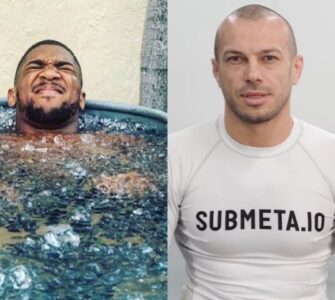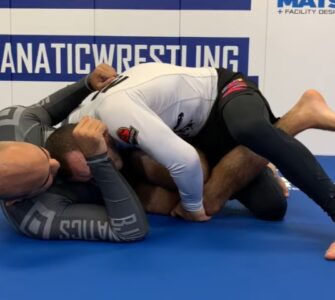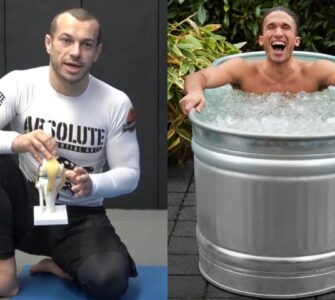Lachlan Giles is one of the most respected names of today’s grappling. He has earned that respect by placing 3rd at this year’s ADCC in the absolute division where he heelhooked Kaynan Duarte, Mahamed Aly and Patrick Gaudio… He has alsp placed in number of important tournaments and by being a successful and detail-oriented coach – which has been shown through being an important factor in the development of other great grapplers, such as Craig Jones, as well as through being a head coach at Absolute MMA and by giving away a massive amount of helpful material through his Youtube channel.
We had a chance to talk with him about his perspective on coaching, making most out of your time on the mats, injury prevention and his wish to have known how to berimbolo back in 2007.
Here’s what he had to say!
BJJEE: You are on of Australia’s top grapplers, especially in no gi; but what you are even more famous for are your coaching skills!
Please, could you tell us a bit about your journey? How was it that you discovered BJJ and what do you think has made you into such a successful grappler and coach?
Lachlan: I found BJJ around 16-17 years ago after watching UFC 1 and seeing the success a smaller person like Royce could have against larger opponents.
It would be hard to pin down my success as a competitor to one single thing. I think that taking a technical, problem solving approach to jiu jitsu – as well as taking on what I believe to be the best training methodology (that is, specific training which is tailored to areas you are trying to improve) – played a large part. One of my biggest strengths is my consistency, as I have barely missed a day of training in the past 10 years, so long as the opportunity to train was available.
And, as much as I would love to claim the success of my students as my own doing, I honestly think that – in order to create a good grappler – the most important thing is to create an environment where they can develop their own game and spend time problem solving, workshopping, and specific training that game.
Of course, as a coach my role there is often just to direct the focus of their game onto something I know is high percentage, as too often you will see people start going down pathways that are low percentage. They have to do the hard work of showing up and a lot of the problem solving work themselves (I help where I can).
BJJEE: Thank you for sharing your views on that with us. In relation to the coaching segment, we’d like to know whether you think that there is a specific skill or a skillset that makes one coach stand out from the rest? What kind of advice would you give to coaches that would like to improve their craft?
Lachlan: There are so many facets to being a good coach. First, you have to know the techniques well, and know them from a broad amount of positions that might not be part of your own game. You have to know them well enough, so that when something isn’t working you can identify and fix the problem that your student is having. On top of that, you have to understand how people learn; and then how to create a correct training structure which will optimise skill acquisition and, often, the athletic potential too.
If I had to say one piece of advice only, it would be to provide context to the technique/position that you are teaching. When I see a technique being taught, I want to know the exact context for when it will or won’t work. Too often this is lacking in instruction.
BJJEE: Agreed – context is everything, and such is the case in Jiu Jitsu as well. Now, shifting the focus more towards the “coach to student” perspective – what do you usually look for in your students? Meaning, which qualities do you believe are the ones that seperate the faster growing students from the more mediocre ones?
Lachlan: The people who improve the fastest seem to be those who have a goal in mind when they come to training, whether it’s a position that they are working on or a particular technique. The people who improve the slowest are those who just show up with no clear goal in mind.
I will add an extra point here, which is a hot topic: my experience has been that the people who take the time to drill seem to improve a lot faster. Although, I do feel like it’s less important to do that when the practitioner reaches an advanced level.
BJJEE: So, having clear goals for each training session combined with more drilling are the keys to faster progress. Thank you.
On an another note, not many people are aware that you’ve also managed to receive your PhD in Physiotherapy while staying on top of your game! How is it that you have managed to balance out your studies and eventual attainment of your PhD with the demands of coaching, training and competing?
Lachlan: Coaching and training can go hand in hand, so I was able to fit my rolling time in and during the phase of the classes I was teaching.
On an another note, maybe it’s just me but I always felt like studying 12 hours per day is not a very productive way to learn. I never understood when people could not find a small part of the day to exercise, especially when we know how beneficial it is – including for productivity.
Taking a 2-3 hours break in order to train was often the perfect way to break up the day and clear the mind for more study later.
BJJEE: I see. But, in terms of the way you’ve managed to still keep on making progress, during all those other study-related obligations: a lot of our readers are busy men and women themselves. Do you have any advice for them, as in how to make the most of their time and progress in BJJ?
Lachlan: Get my instructional series through BJJ Fanatics and Grapplers Guide, of course. 😉
To progress fast with limited training time available, the thing I would recommend most people do is to emulate a high level grappler. That grappler has already done the hard work of finding out what does and doesn’t work for a given situation. So you just have to try to copy them.
It’s important that you choose someone who has similar attributes to yours, mainly in regards to height and flexibility. If you are limited with time, then it’s going to be way easier if it’s someone who has broken down their game in a form of an instructional series, or if someone else has broken down their game, e.g. the BJJ Scout videos.
And, of course, one of the best people to emulate is your coach, as they will have the answer to any questions you may have. Sometimes this can be tough though, as everyone in the gym is usually proficient at countering the coach’s techniques and it can take some time to start seeing results.
Most of the people reading this would benefit from doing more drilling as well, so that’s the other thing I would recommend for people to maximize their progress.
BJJEE: Understood, so it’s – all in all – about being conscious of what one is doing, not just going through the motions.
And in regards to „being conscious“: is there something that you know and understand today, which you wish that you’d known it when you were younger?
Lachlan: I wish I knew the berimbolo in 2007, so I could compete at Worlds doing a move no one had an idea of how to counter.
BJJEE: Hahaha, great! It’d be fantastic to be able to go back in time, sometimes. But, what about injuries? You’ve had a fair share of them as you progressed as well, so how did you handle them?
In other words: what kind of advice would you give in regards to dealing with injuries and setbacks, both mentally and physically?
Lachlan: The most important piece of advice that I can give for injury prevention is to keep your training load consistent, as a rapid increase in training load is a pretty good predictor that you will get injured. However, what people often miss when I say this is that a decrease in training load, e.g. taking a 2 week vacation, can make it so that going back to your normal training load is now a rapid increase in training load.
I haven’t had any serious injuries for some time, but my advice is to, if you are injured, first seek a medical opinion. Afterwards, it’s important to ask them the following question: „What can I still do?“ So long as the condition allows, you need to try to keep some level of training going; so that when you get back to full training, the increase in load is not as drastic.
BJJEE: So, common sense goes a long way. And, similarly, is there a piece of advice that you believe a new white belt and/or an up and coming blue belt absolutely needs to know? Which one is it?
Lachlan: I think it’s important for them to understand how important the details are. A black belt is doing the exact same move that you are trying to do, it’s just that they do it better. So pay attention and make sure to learn the details.
BJJEE: Thank you for restating the importance of details for us, Lachlan. Prior to us wrapping up this interview, is there perhaps some sort of a “secret advice” that you’d like to share with our readers? Perhaps something as a “key” to nailing a some sort of a technique, a concept that not many jiu jiteiros know of…?
Lachlan: It will remain a secret for now, but this is all I will say: outside sankaku > inside sankaku
BJJEE: Thank you for this interview, Lachlan. Is there anything else that you would like to share with our readers, prior to us concluding it?
Lachlan: Thank you for having me. Please check out and subscribe to my YouTube Channel – Absolute MMA St Kilda. And if you are ever in Melbourne, please drop by.

